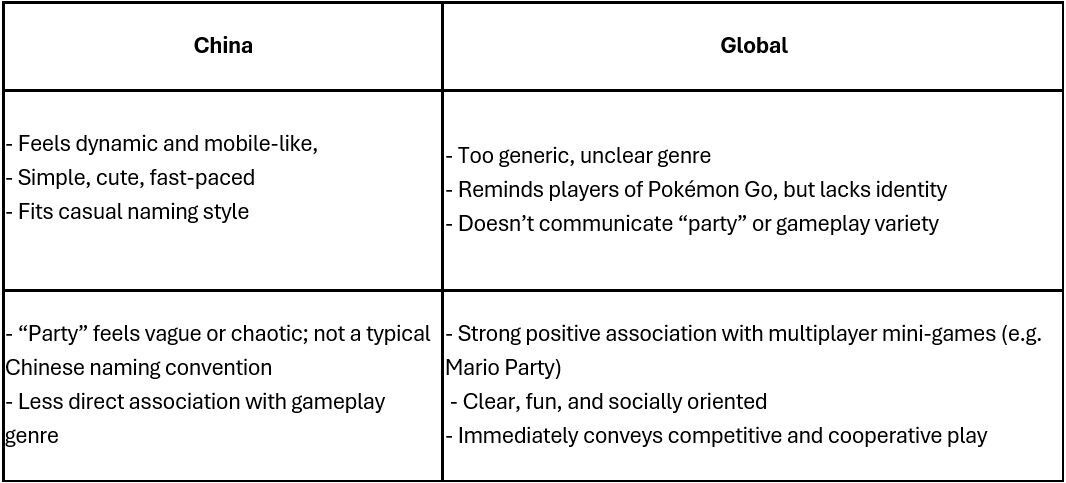
The games we play today aren’t just built in studios – they’re shaped in research labs, tested across cultures, and redesigned again before they ever hit your phone.
Take Eggy Party, for example. The breakout mobile game from Chinese tech giant NetEase became a billion-dollar sensation in China with its playful mini-games, colorful avatars, and thriving user-generated content (UGC) world. But turning a local hit into a global success isn’t as simple as hitting “publish” on the App Store.
NetEase, before launching the game internationally, took a different approach—one that’s quickly becoming the new global standard.
They partnered with Duamentes, product and strategic consultancy, behind the Duamentes Gaming Report 2025, to run an intensive research sprint. The goal was to answer a deceptively simple question: Will Western players get it? Will they like the name, the visuals, the gameplay? Or will the game that works so well in China get lost in translation?
The answer lies in how people experience games, from the moment they first spotted them in an app store to the emotions they feel days later. Duamentes designed a full program around this natural player journey, starting with interviews to test names and icons before anyone even touched the game.
From there, players were observed in real-time during their first sessions, tracking how they onboarded, where they hesitated, and what sparked joy or confusion. Over the next two days, participants kept diary logs and answered emotion-focused surveys. And finally, in-depth interviews revealed what stood out, what fell flat, and what made players come back.
The study involved 16 players aged 18–35 from the US, UK, Germany, and Australia, with a mix of casual and midcore gamers. In a global market where first impressions drive downloads and retention, this small sample revealed big truths.

What’s Premium in One Culture Feels Chaotic in Another
Western players weren’t just evaluating gameplay; they were reading between every pixel. In China, dense interfaces filled with text and color suggest richness and value. But for Western players, the same visuals felt overwhelming. Where Chinese design celebrates fullness, Western design favors whitespace and clarity.
That disconnect showed up everywhere, from the main menu to character screens to in-game towns. Western players, expecting interaction in lush 3D environments, were surprised when the world around them didn’t respond. "It looks alive but feels like a menu," one player said. That subtle mismatch between design and function broke immersion, fast.
Even good ideas faltered in execution. For example, loading screens were meant to explain each mini-game’s objective. But on high-speed devices, players only saw them for 1–2 seconds; nowhere near long enough to learn anything. Instead of clarity, they got confusion.

Small Changes, Big Payoffs
Duamentes' research led to a series of changes that made Eggy Party feel more familiar and more fun for global audiences.
The original icon, a zoomed-in face, confused Western players. It didn’t hint at the game’s tone or genre. When replaced with a full-body character in motion, players instantly understood what kind of game they were getting into. The new icon was clear, playful, and, most importantly, inviting.
UI was reworked to reduce visual clutter. A new “GO” button signaled where to begin. Icons were grouped and labeled. Tutorials, once easy to miss, were rewritten and better timed. Even interface density became customizable, with Classic and Immersive modes allowing users to choose how much information appeared on screen.
By Day 3 of testing, players were more confident. They explored the town more deeply, tried out customization features, checked rankings, and invited friends to play. Flow and immersion scores rose. Tension and frustration stayed low. Even small gains, like higher contrast text and better icon hierarchy, helped players navigate more intuitively.

Research Before Regret
For NetEase, the payoff came before launch. Instead of learning what didn’t work from negative reviews and churn, they got answers early, when fixes were cheaper, faster, and more effective. The research informed A/B testing on app stores and helped validate names, icons, and descriptions based on real conversion data.

And this wasn’t just about Eggy Party
Chinese studios are increasingly going global and succeeding. From Genshin Impact to Honor of Kings, Chinese games are cracking Western markets not just through marketing budgets, but by deeply understanding what players want. The formula? High-quality design, yes, but also cultural awareness, emotional insight, and early testing.
Find more at www.duamentes.com/gaming







